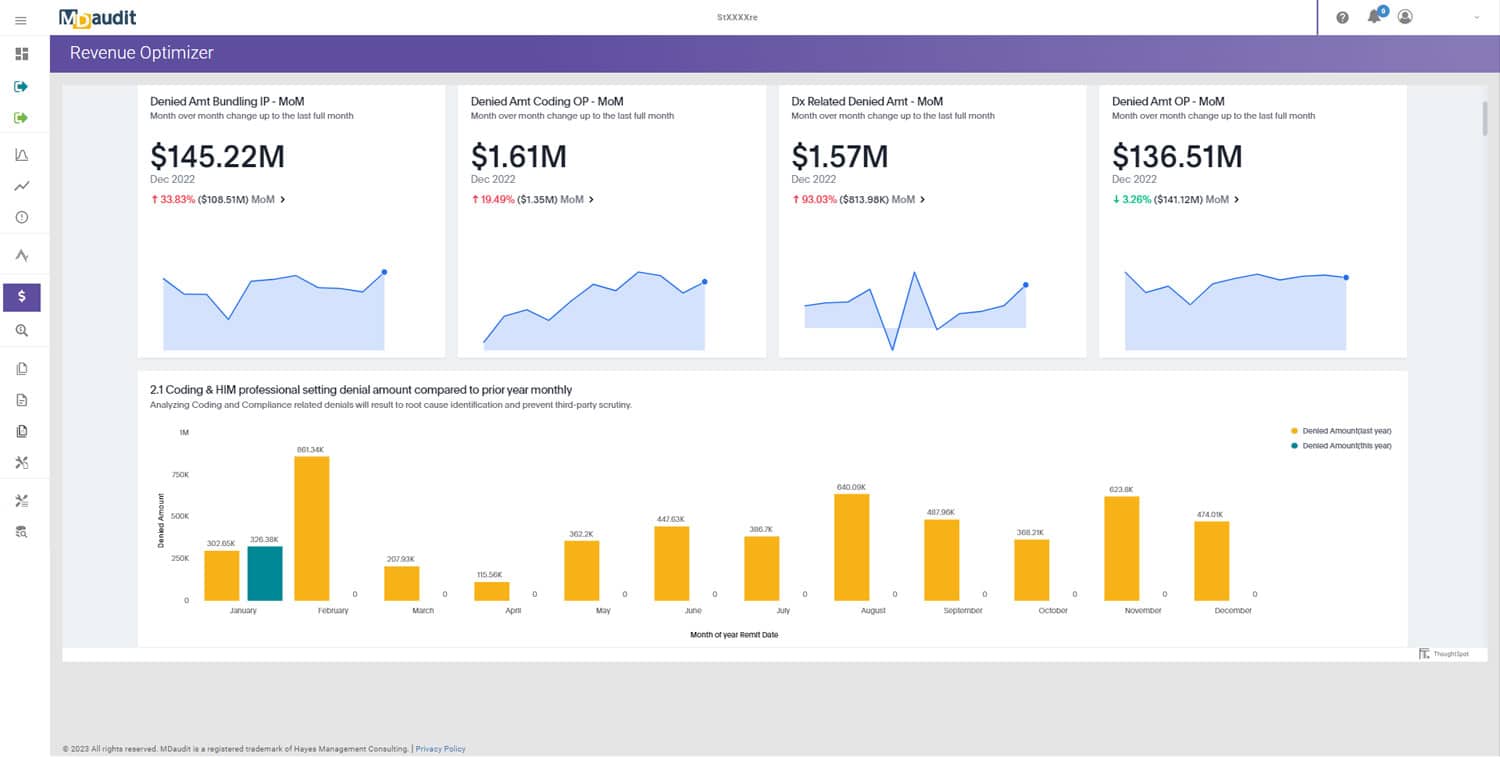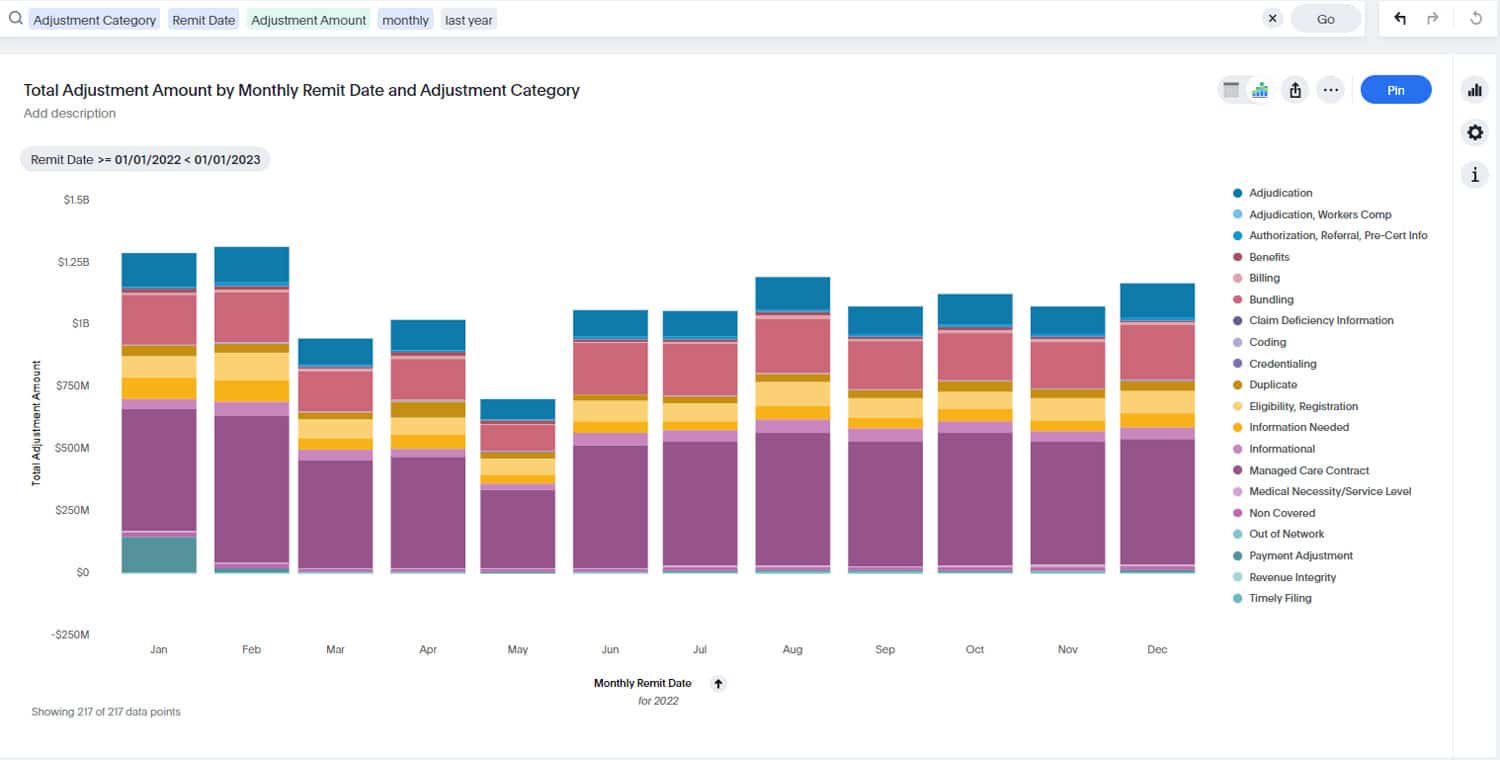A Discussion on the Relationship Between Providers and Payers
The payer–provider relationship has long been strained, but it has reached a breaking point in recent years. Hospitals and health systems work tirelessly to provide patient care, strengthen the revenue cycle, and meet compliance requirements. At the same time, payers are intensifying scrutiny, deploying artificial intelligence (AI) tools in utilization management and coding reviews, and driving denial volumes to historic highs.
This tension was the main topic during a recent HFMA roundtable sponsored by MDaudit, where revenue cycle and compliance leaders explored how healthcare systems can navigate this reality with technology.
While there is optimism that providers and payers will one day align around putting patients first, waiting for that day is not a viable option. Leaders are taking a proactive approach to revenue strategy that leverages technology, collaboration, and data to offset payer-driven pressures.
The Growing Tension Between Payers and Providers
The roundtable highlighted the stark imbalance: providers are being asked to do more with less, while payers are accelerating their use of AI to slow down reimbursement. Coding-related denials alone have surged 126% over the past three years, representing one of the most significant increases in recent history. Medicare Advantage plans are a particular flashpoint, with HCC and RADV audits up 72% and total MA denials climbing 51%.
Denials are not only more frequent but also more costly. Hospital inpatient-related denials jumped nearly 220% to an average of $10,000 per claim. Outpatient denials increased 32.5% to $825 per claim, while professional denials rose 24% to $140 per claim. Combined with a doubling of external audit volumes, especially prepayment audits, these trends are squeezing cash flow and threatening margins across the care continuum.
This creates a cycle of delayed reimbursement, increased administrative burden, and heightened financial risk for providers. The message from the roundtable was clear: without a shift in strategy, health systems will continue to carry a mounting burden without tangible relief in sight.
The Current Picture
The roundtable discussion made it evident that the reimbursement environment has structural features: prepayment audits, expanded fraud detection efforts, and delayed reimbursements are not temporary measures.
Health systems are embracing a proactive mindset to survive. Instead of focusing solely on defending against denials, leaders are reshaping their revenue cycle strategies to anticipate payer behavior, reduce avoidable risks, and preserve margins in real time.
Reshaping the Revenue Cycle Strategy
The foundation of this new strategy lies in technology. AI, automation, and continuous monitoring tools. By analyzing payer trends and denial data in real time, providers can surface financial risks earlier, intervene faster, and strengthen audit defense.
Automation also introduces operating margin improvements. For example, intelligent workflows can shorten response times for additional documentation requests (ADRs), improve audit outcomes, and help organizations preserve revenue despite staffing shortages. Generative AI and natural language processing (NLP) take this further by democratizing data access. They enable finance leaders to ask natural language questions and instantly compute complex formulas, delivering clear and actionable insights that can be shared across teams.
These tools are improving productivity while breaking down silos between revenue integrity, compliance, CDI, and executive leadership. When leaders interact with the same valuable data in new ways, they can make faster, more informed decisions and shift the revenue cycle from reactive to predictive.
Building a Unified Operating Model
A resilient revenue strategy also requires strong internal compliance programs and a cross-functional operating model. By connecting billing, coding, CDI, and revenue integrity teams, leaders can create a closed feedback loop that improves efficiency across the revenue cycle.
The roundtable emphasized the value of using data as a storytelling mechanism. By presenting objective insights, finance executives can build credibility, align stakeholders, and secure support for needed investments. Just as important, establishing success metrics ensures accountability and demonstrates tangible ROI—an essential requirement for leadership teams under pressure to justify every dollar spent.
Opportunities for Transformation
With a core strategy in place, finance leaders can identify high-value opportunities to strengthen operating margins. The roundtable discussion pointed to several areas of focus:
- High-value outpatient and inpatient services: Elective procedures and complex care services can be optimized for stronger revenue retention.
- Clinical documentation improvement (CDI): CDI programs are directly tied to denial management metrics and strengthen coding accuracy.
- AI-enabled coding operations: While payers use AI to scrutinize claims, providers can use it to accelerate coding accuracy and efficiency, while ensuring human oversight to prevent errors at scale.
- Mid-cycle to back-end integration: Linking CDI, coding, and billing creates a more seamless workflow that reduces denials and accelerates cash flow.
Together, these initiatives enable health systems to transform their revenue cycle into a growth engine rather than a vulnerability.
The Playbook
The payer–provider relationship may be broken, but healthcare executives are not powerless. An aggressive, AI-enabled, data-driven, and people-led approach can help organizations protect revenue, improve margins, and safeguard financial survival.
As Dana Finnegan, Director of Market Strategy at MDaudit, reflected during the roundtable, the most forward-looking finance leaders are already embracing these strategies. By reshaping the revenue cycle, they are positioning their organizations not only to withstand payer scrutiny but to thrive in an increasingly high-risk landscape.
Until the day when payers and providers align more closely around patients, resilience and reinvention remain the best defense.
Q&A with Dana Finnegan, Director of Market Strategy
- How do payer strategies around AI-driven audits and denials affect healthcare organizations today?
At MDaudit, we often hear how payers have doubled down on AI models, leading to an increase in the scrutiny of claims, coding-related denials, and payer audits. This increase has put a ton of strain on healthcare organizations—at the end of the day, this payer scrutiny is adversely affecting revenue recognition and margins in a very negative way.
- What are the must-have elements of a proactive revenue strategy for a healthcare system?
Employing a risk-based approach to payer scrutiny is critical in two main ways:
- Employing a blend of prospective and retrospective audits – with a push to do a higher percentage of prospective audits – will (in most cases) ensure that claims are coded to the highest accuracy and integrity and recognize maximum reimbursements.
- Healthcare organizations must adopt AI models, analytics, benchmarking, and other data-driven approaches that put them in the ‘driver’s seat’ when combating increased payer scrutiny. These AI and analytics can help them immediately identify risky/anomalous billing trends so proactive changes can be made to increase first-pass pay rates, reduce denials, and achieve healthier margins.
- Where can AI and NLP deliver the most significant ROI for healthcare revenue cycle professionals?
AI, NLP, and overall analytics can be incredibly helpful when charges can be ‘scrubbed’ before submission to identify charges that need more accurate coding. These technologies can also identify claims that are most likely to be denied and provide suggestions on how to fix them, all before submission. AI can help make payer adjudication patterns and policies consumable to healthcare organizations so they can understand how to get claims paid on the first submission.
- How can data storytelling help align clinical and financial stakeholders?
Data storytelling is critical to align and break down silos that may exist between those in the revenue cycle and those providing patient care. It is really the responsibility of those along the revenue cycle continuum to make sure that clinical folks understand that they are part of the revenue cycle too – meaning, their actions in properly documenting patient care, etc., are key in ensuring downstream claims can get coded properly and promptly – as well as reap the reimbursement that is so critical in supporting financial margins.
The revenue cycle folks need to understand that patient care is indeed the priority for the clinicians, but they should still keep them in the loop about what they can do to improve operational and financial outcomes. When revenue cycle teams share positive and negative stories from their dealings with payers, it creates a ‘unified front’ between financial and clinical stakeholders.
- What single action can health systems take this year to strengthen their claim audit defense and revenue retention?
Make sure they are utilizing the best technology and following best practices, aka: everything we’ve discussed here. Deploy more prospective audits, AI (augmented intelligence), analytics, and take a data-driven, risk-based approach to revenue cycle management.








